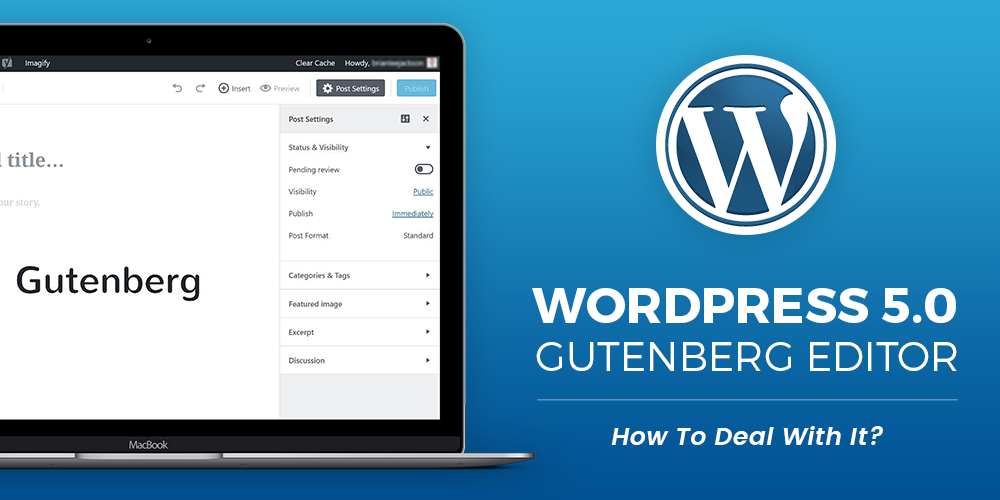At some point in the following not many months, the way that you make content with WordPress will fundamentally change. The current content manager that you’ve been utilizing for quite a long time will disappear, supplanted by the fresh out of the box new WordPress Gutenberg Editor. Understand WordPress Gutenberg editor guide.

A major change like this is presumably ringing some alerts in your mind…
Will your work processes be interfered? Are your current modules and WordPress themes going to continue working? How might you continue making incredible theme with this new editorial manager? In this post, you will get familiar with the responses to those inquiries in addition to significantly more.
Share:WordPress Gutenberg Editor
This is a definitive WordPress Gutenberg Editor direct for anybody and every individual who makes content with WordPress. What the WordPress Gutenberg Editor is, the reason/when it’s coming, and the responses to some fundamental FAQs. How you can emulate the current supervisor’s usefulness and make a fundamental blog entry with Gutenberg. Some under-the-radar tips for working all the more gainfully with Gutenberg (in light of my active experience from utilizing it on a live site). Follow step by step instructions to saddle the new highlights in Gutenberg to profit by substance and design usefulness that you never approached.
This new manager is coming. So set aside some effort to acquaint yourself with the WordPress Gutenberg Editor guide so that you’re prepared to get straight down to business when it’s delivered. The Gutenberg Editor is a fine reimagination of the current WordPress content tool that you use to make posts or pages with WordPress. I state reimagination instead of update since it’s really remaking the altering experience starting from the earliest stage. When improvement is finished, Gutenberg will supplant the current WordPress content manager and you will utilize the Gutenberg Editor to make content going ahead (however you will have choices in the event that you need to adhere to the current experience].
So What Makes The Gutenberg Editor A “total Reimagination”?
In the first place, how about we start with an invigoration of what I mean by the “WordPress proofreader”. In case you’re not exactly sure what I’ve been discussing. The Gutenberg Editor Introduces something Called “BLOCKS” The current WordPress content tool is somewhat similar to one long Microsoft Word archive. Gutenberg changes that dynamic with something many refer to as blocks. You can refer to WordPress Gutenberg tutorial. .
You at that point collect your substance utilizing a progression of blocks. For instance, this is what a similar theme from above looks like in Gutenberg. It has four unique blocks. The significance of this block based methodology is it opens further developed abilities for theme and design. For instance, you’ll have the option to present segments, addition and style fastens, and perform heaps of different activities that you either can’t do with the current supervisor, or that would require HTML/CSS with the current editorial manager. Just go through WP Gutenberg editor guide.
Share:Here’s Why The WordPress Core Team Is Making This Change
For the vast majority of its life, WordPress has utilized a similar essential editorial manager (TinyMCE). While the plan might have changed to a great extent, the center usefulness never faltered. So why the change now? In the event that it worked for the last ~15 years, for what reason wouldn’t it be able to continue working for the following 15 years? There are a couple of reasons.
Most importantly, the current editorial manager is simply excessively restricting for easygoing clients nowadays. While WordPress creates it conceivable to make anything you can envision, it possibly does that on the off chance that you know some HTML/CSS. Consolidate that with rivalry from visual web designers like Squarespace and Wix (who have both doubled their use over the previous year), and you can comprehend why the WordPress center group felt that WordPress required a more adaptable changing experience to keep its edge. Refer the WordPress Gutenberg editor tutorial.
Second, Gutenberg gives the capacity to bind together the numerous divergent interfaces that bustling WordPress clients have. Prefer not to get excessively specialized here. Yet, in case you’re utilizing outsider modules, you presumably have different shortcodes, meta boxes, and settings regions that are a piece of your WordPress work processes. Gutenberg can bind together each one of those various interfaces into the block framework.
Check out our website for stunning premium WordPress Themes that will get you an amazing website for your blog, business or services. Buy WordPress themes at low price with discounts on our website.
Share:












